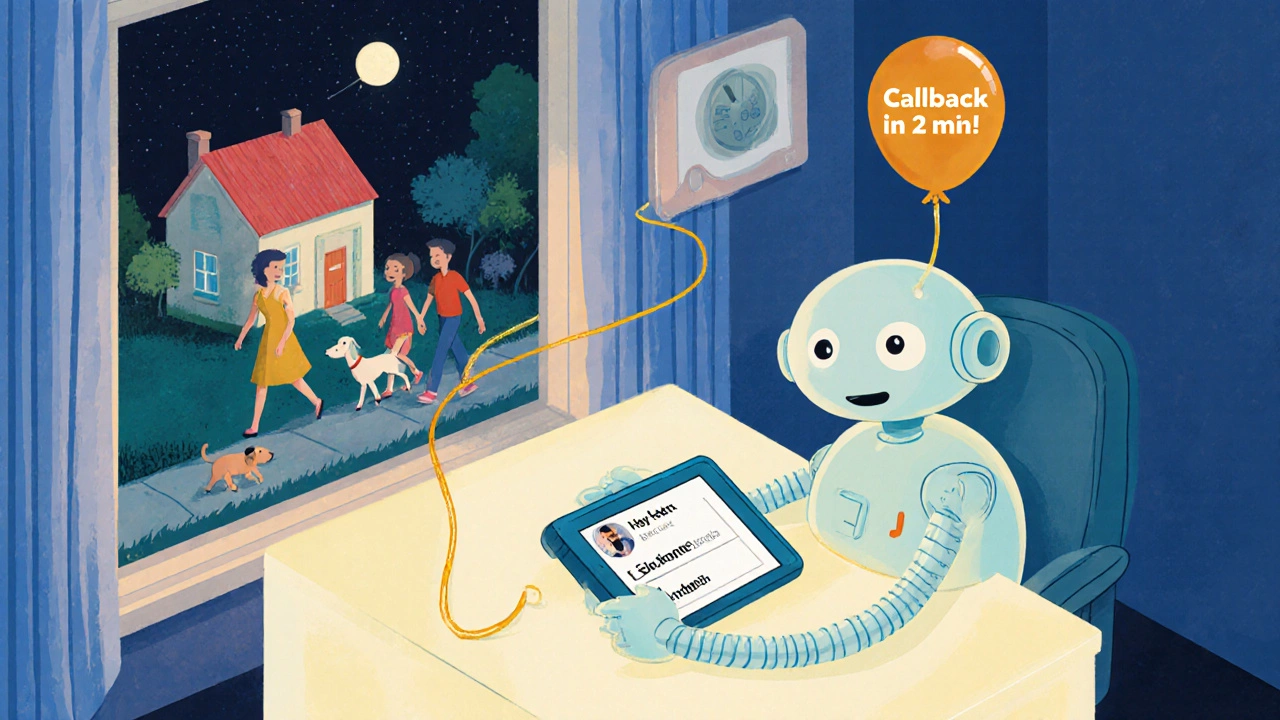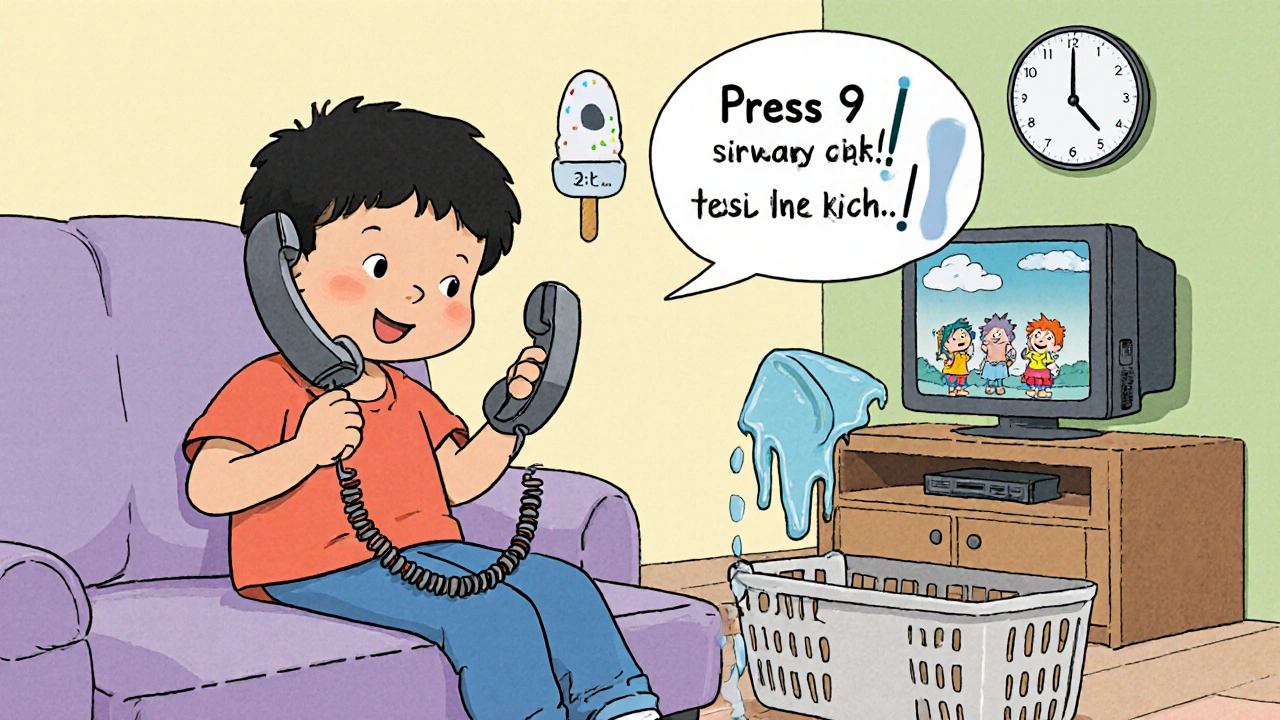Imagine you’re calling your internet provider because your service went down. You press 1 for support, then 2 for billing, then wait. And wait. Five minutes. Ten. The music plays. A robotic voice says, "Your call is important to us." You check your watch. Your kid needs help with homework. You’re about to hang up. That’s when you see it: "Press 9 to request a callback." You press it. You hang up. Five minutes later, your phone rings. The agent knows your name, your issue, and has your account open. You get fixed in 90 seconds. No hold. No frustration.
This isn’t magic. It’s queue callback-a VoIP feature that lets customers opt out of waiting in line and instead gets a call back when an agent is ready. And it’s changing how businesses handle customer service.
Why Holding Customers Is a Bad Business Move
People hate waiting on hold. Not just a little. A lot. According to SQM Group’s 2022 report, 15% to 30% of callers hang up after just two minutes in a queue. That’s not a glitch. That’s a systemic failure. And it’s expensive. For every customer who hangs up, you lose not just that sale, but potentially their loyalty, their referrals, and their trust.
Traditional call queues force customers to be stuck. They can’t work, drive, or even walk away without losing their place. It’s like asking someone to stand in line at a grocery store while you go grab coffee. They’re not just annoyed-they’re disengaged. And when they finally get through, they’re already in a bad mood.
Queue callback flips that. Instead of making the customer wait, you give them control. They choose: "Wait here," or "Call me back." And when they pick the callback option, they’re free. They can do their laundry, finish their meeting, or play with their dog. When the system calls back, they’re ready. And so is the agent.
How Queue Callback Actually Works
Queue callback isn’t just a button. It’s a system. Here’s how it runs under the hood:
- A customer calls in and enters the queue.
- They hear: "Your estimated wait time is 8 minutes. Press 9 to request a callback instead."
- They press 9. The system records their phone number, the reason for the call (from IVR selections), and the time they requested the callback.
- As soon as an agent finishes their current call and has a 2- to 5-minute wrap-up window, the system triggers an outbound call to the customer.
- The call comes from a verified number (often the business’s main line), and the agent’s screen pops up with the customer’s full history-IVR choices, past tickets, even notes from earlier interactions.
This system only works if it’s built right. Key settings include:
- Retry attempts: Most systems try 3 times if the customer doesn’t answer. After that, it’s either voicemail or a text reminder.
- Callback intervals: The system waits 10 minutes on average between attempts. Too short? It’s annoying. Too long? They forget they requested it.
- Callback hours: You can restrict calls to business hours (9 AM-5 PM). No one wants a 7 PM call from their cable company.
- Caller ID: Must show your business name or main number. If it shows a random number, customers think it’s spam and ignore it.
Platforms like Vonage, Nextiva, RingCentral, and 8x8 all support this out of the box. But setting it up isn’t automatic. You need to configure the PBX queue, link it to your CRM, and test the flow. Skip those steps, and you’ll get callbacks going to voicemail, or agents seeing blank screens.
Real Results: Numbers That Matter
Companies that switched from hold to callback saw dramatic changes:
- Call abandonment dropped from 28% to 6% at a healthcare provider using Nextiva.
- Customer satisfaction scores rose 22% at a telecom firm using Vonage’s callback system.
- Agent handle time fell 15-18% because agents had full context before answering.
These aren’t guesses. They’re from case studies by CallHippo, Net2Phone, and DMG Consulting in 2023. The data is consistent: when customers aren’t forced to wait, they’re happier, quicker to resolve issues, and more likely to stay loyal.
And the cost? Most VoIP plans include callback as a standard feature. RingCentral charges $0.0085 per minute for outbound callback minutes beyond the base plan-so for 100 callbacks of 5 minutes each, that’s less than $5. The ROI? For every 1% drop in abandonment, businesses see a 1.5% increase in customer retention, according to Forrester’s 2023 analysis.

Where Queue Callback Falls Short
It’s not perfect. There are real pitfalls.
1. Callbacks that don’t connect. If the system calls and the customer’s phone goes straight to voicemail, it’s useless. Some companies now use "double-ring verification"-the system calls, waits 10 seconds, then calls again. If it goes to voicemail the second time, it sends a text: "We tried to reach you. Reply YES if you want another callback."
2. Agents aren’t prepared. If the CRM doesn’t sync with the queue, the agent gets a call from someone they’ve never heard of. That’s worse than holding. The customer feels ignored. The agent wastes time asking basic questions. Integration is non-negotiable.
3. Customers don’t trust the number. If your callback shows up as "Unknown Caller," 29% of people won’t answer, according to Reddit’s r/contactcenter users. Always use your main business number. If you have multiple lines, set up a dedicated callback number and brand it clearly: "Call from [Your Company] Support."
4. Regulatory risks. In the U.S., TCPA rules require explicit consent before automated calls. If someone just presses 9 without saying "yes," you could be violating the law. Always record consent: "By pressing 9, you agree to receive a callback from us."
And in healthcare or finance, where fraud prevention matters, some experts warn that callbacks can be risky. If a customer is being scammed, a callback from an unknown number might be the scammer’s next move. In those cases, combine callback with SMS verification or a secure portal login.
Who Benefits Most?
Queue callback isn’t for everyone-but it’s perfect for certain industries:
- Healthcare: Patients call with urgent questions. They can’t wait. 82% of clinics using queue callback report higher patient satisfaction.
- Telecom: High call volume, long wait times. Vonage’s clients saw 22% higher satisfaction scores after rollout.
- Financial services: Customers need quick answers on balances or fraud alerts. But only if the system verifies identity first.
- Customer support centers: Any business with more than 50 calls a day should consider it.
Small businesses? It’s less common. Only 38% of small business VoIP plans include it, according to GetVoIP. But if you’re growing, it’s one of the cheapest ways to look professional. You don’t need a $10,000 system. A $25/user/month plan from Nextiva or 8x8 includes it.
How to Get Started
Here’s how to set it up right:
- Choose a VoIP provider that includes queue callback (Vonage, Nextiva, RingCentral, 8x8).
- Enable the feature in your PBX admin panel. Look for "Queue Callback" or "Callback Request" under Call Flow settings.
- Set retry attempts to 3, interval to 10 minutes, and limit calls to business hours.
- Link your CRM. Make sure customer name, number, and last interaction show up when the call connects.
- Test it. Call your own number. Request a callback. See if it rings back within 10 minutes. Check if the agent sees your info.
- Train your agents. They need to know this isn’t a random call-it’s a customer who chose not to wait. They’re already halfway to being satisfied.
- Announce it. On your IVR: "Your wait time is 7 minutes. Press 9 to get a free callback. No hold. No stress."
Most platforms have setup guides rated 4.1/5 on G2. If you get stuck, search for "[Your Provider] queue callback setup" on YouTube. You’ll find walkthroughs from real admins.

What’s Next? AI and Smarter Callbacks
The next wave is smarter. Vonage launched AI-driven callback timing in May 2023. It doesn’t just wait for an agent to be free-it predicts when you’ll be *most likely* to answer based on your past behavior. If you always pick up at 2:30 PM, it schedules the call then.
Five9 is testing emotion-aware callbacks. If your voice sounds frustrated during the IVR, it bumps your callback to the top of the list. RingCentral now uses Google Maps to estimate if you’re home or at work before calling.
Gartner predicts that by 2025, 70% of queue callback systems will use real-time customer data to personalize timing and agent prep. That means no more "What’s your issue?" The agent already knows.
But the core idea stays the same: Don’t make people wait. Give them back their time. That’s not just good service. It’s good business.
Frequently Asked Questions
Is queue callback free with my VoIP plan?
Most mid- to enterprise-level VoIP plans include queue callback at no extra cost. Basic plans for small businesses may charge extra or not include it. Check your provider’s feature list-Vonage, Nextiva, and 8x8 all include it in their standard business plans starting at $19.99/user/month.
Can customers still choose to hold instead of getting a callback?
Yes. Always offer both options. Some customers prefer to stay on the line-especially if they’re already in the middle of something and can’t take a call right away. Giving them a choice increases trust. Never force a callback.
Why do my callbacks sometimes go to voicemail?
This usually happens because the system doesn’t verify if the customer is available. To fix it, enable double-ring verification: the system calls once, waits 10 seconds, then calls again. If it goes to voicemail both times, send a text: "We tried to reach you about your service issue. Reply YES to schedule another callback."
Does queue callback work with mobile phones?
Yes. Queue callback works on any active phone number, including mobile. In fact, mobile users benefit the most-they’re often on the go and can’t sit and wait. Just make sure your system uses the number they provided during the IVR process, and avoid calling during late hours.
Is queue callback compliant with TCPA and GDPR?
Yes-if you get explicit consent. In the U.S., TCPA requires customers to say "yes" or press a key to opt in. In the EU, GDPR requires documented consent and the right to opt out at any time. Always record the consent action (e.g., "Pressed 9 to request callback") and store it in your CRM.
How long does it take to set up queue callback?
Most systems take 2-4 hours to configure, including testing. If you’re integrating with a CRM, add another hour. Vendor documentation is usually clear-search for your provider’s "Queue Callback Setup Guide" on their support site. Many have video walkthroughs.
Final Thought: Stop Making Them Wait
Customers don’t care how busy your agents are. They care if you respect their time. Queue callback isn’t a fancy feature-it’s a basic act of courtesy. And in a world where every second counts, that’s what turns a good service into a great one.
